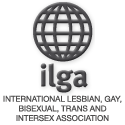Last month, the Turkish justice minister, Bekir Bozdag, announced a government project to establish separate prisons for the country’s lesbian, gay, bisexual and transgender inmates.
According to Mr. Bozdag’s written statement, the goal is to protect these inmates from abuse.
This was not the first time Ankara has floated the idea: The Justice Ministry proposed plans last July for facilities for “people in L.G.B.T. situations.”
Turkey’s penal system is underfunded and overcrowded. Correction officers are poorly trained, and disciplinary measures arbitrarily implemented. Rape is common and access to health care is inadequate. Establishing dedicated L.G.B.T. prison facilities will do nothing to solve these larger problems. And a policy of separation — or even discourse that suggests this is the right approach — could have the unintended consequence of fueling the country’s widespread homophobia.
Though homosexuality is legal in Turkey, public attitudes are hardly permissive. In a 2013 Pew Research Center survey, 78 percent of Turks said “homosexuality should not be accepted by society,” up 12 percent from 2002, the year Prime Minister Recep Tayyip Erdogan’s Justice and Development Party, or A.K.P., came to power. The European Commission cited reports of 12 L.G.B.T. hate killings between October 2012 and September 2013, plus “incidents of torture, rape, ill-treatment, domestic violence, harassment and cyberattacks.” Anti-gay attacks and hate speech have also increased.
Turkey’s vague regulations on the protection of “public morality” are frequently interpreted in ways that discriminate against gays in employment, education, housing and health care. The state minister for women and families in 2010 called being gay “a sickness.” Turkey’s military considers homosexuality a psychosexual disorder; gays are exempted from service on this basis.
And the A.K.P. in 2012 refused to include gender identity and sexual orientation in constitutional antidiscrimination provisions.
“Homophobia and transphobia are spread across every aspect of daily life,” says Sezen Yalcin, a coordinator at the Social Policies, Gender Identity and Sexual Orientation Studies Association, an Istanbul-based NGO. “L.G.B.T. people live in fear of being exposed,” she adds. Those who are openly gay or transsexual are seen as “defying the near-holy family structure.”
Many Turkish activists are thus skeptical of the ministry’s stated intentions, particularly as no L.G.B.T. rights groups were informed — much less consulted — before Mr. Bozdag’s announcement. To date, any plans for L.G.B.T.-only prisons remain entirely abstract, and some see the whole episode as a cynical reaction by a government seeking to parry criticisms from Brussels and opposition parliamentarians in Ankara, and eager for protection from lawsuits.
Questions of best practice for the treatment of L.G.B.T. inmates are complex, and policies vary worldwide. In Turkey, where no national regulations are in place, general protocol is to restrict their interaction with the wider prison population. In facilities with more than one L.G.B.T. inmate, cells may be shared. But because there are few openly L.G.B.T. inmates, isolation often effectively means solitary confinement — a punishment reserved for higher-risk criminals.
One transgender inmate described her treatment when she was incarcerated 10 years ago in a letter this year to an NGO working on improving prison conditions. Using the pen name “Funda,” she recalled how the administrators in the facility to which she was initially assigned were “dumbfounded” by her condition. They forced her to strip in front of several male officers so that they could check her genitals, placed her in solitary confinement with no hot water or toilet, and called her “the man who dressed like a woman.” Transferred to a second prison, she was confined to a solitary cell in a high-security ward. Another request was necessary before she was moved to a facility with transgender inmates.
Recent reports suggest not much has changed in the last decade.
The European Court of Human Rights in October 2012 ruled that Turkish prison authorities had subjected a young gay male to “inhuman and degrading” treatment in violation of the European Convention on Human Rights. In 2008, soon after being detained, he requested a transfer from a cell where he was being bullied to one shared with other gay inmates. Instead, he was placed in solitary confinement for over eight months. The court held that the state must ensure treatment that did not cause “hardship beyond that which is an unavoidably inherent feature of detention.” Ankara was ordered to pay the defendant 22,000 euros, and a precedent was established.
In March, transgender inmates in the Black Sea province of Samsun went on a hunger strike, saying they were subjected to harsh treatment and sexual abuse.
Clearly, ad hoc policies of isolation are not working. Some proponents of the government plan might assert that separate facilities will help to protect L.G.B.T. inmates, but this argument simply reinforces a blame-the-victim mentality. In any case, the abuse of prisoners should be condemned and punished regardless of sexual identification.
Establishing dedicated prisons will not foster a more accountable penal system, or end harassment and sexual abuse. Moreover, the creation of special facilities could force L.G.B.T. inmates to serve sentences far from home, limiting visits by lawyers, friends and relatives.
In a homophobic country, sanctioning separate facilities sends a message that similar segregation is acceptable outside of prison walls. What is needed are policies that enforce protection for all inmates, diligent investigation of harassment complaints, regulations that hold prison authorities accountable for inmates’ well-being, and national strategies that fight discrimination. And if Ankara is serious about helping the country’s L.G.B.T. inmates, it must include Turkish rights groups in policy discussions, right from the start.
Diba Nigar Goksel is the editor in chief of Turkish Policy Quarterly.
by The New York Times | Diba Nigar Goksel
Source – Revista de Prensa







